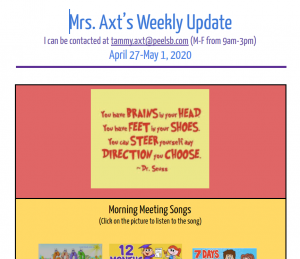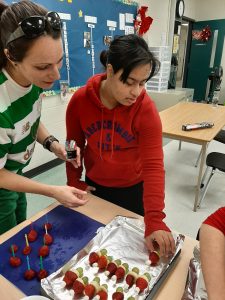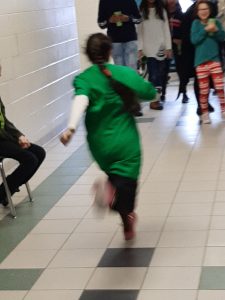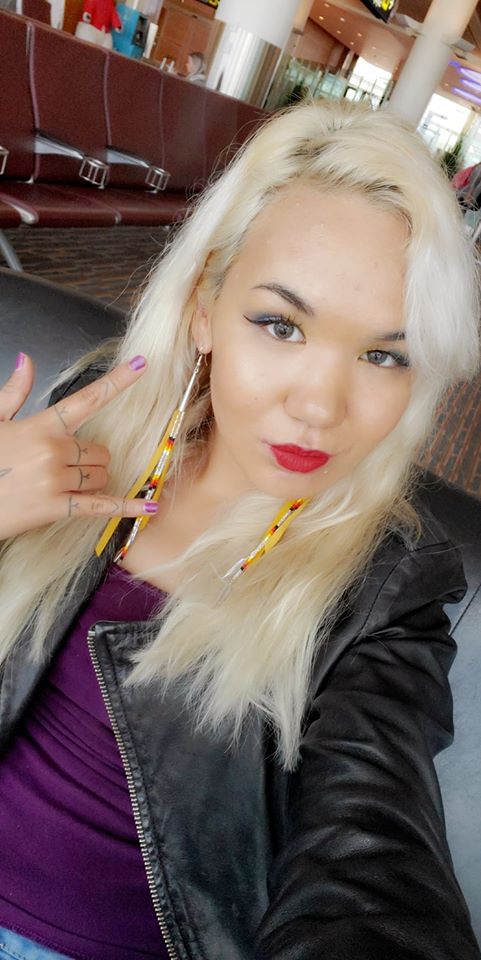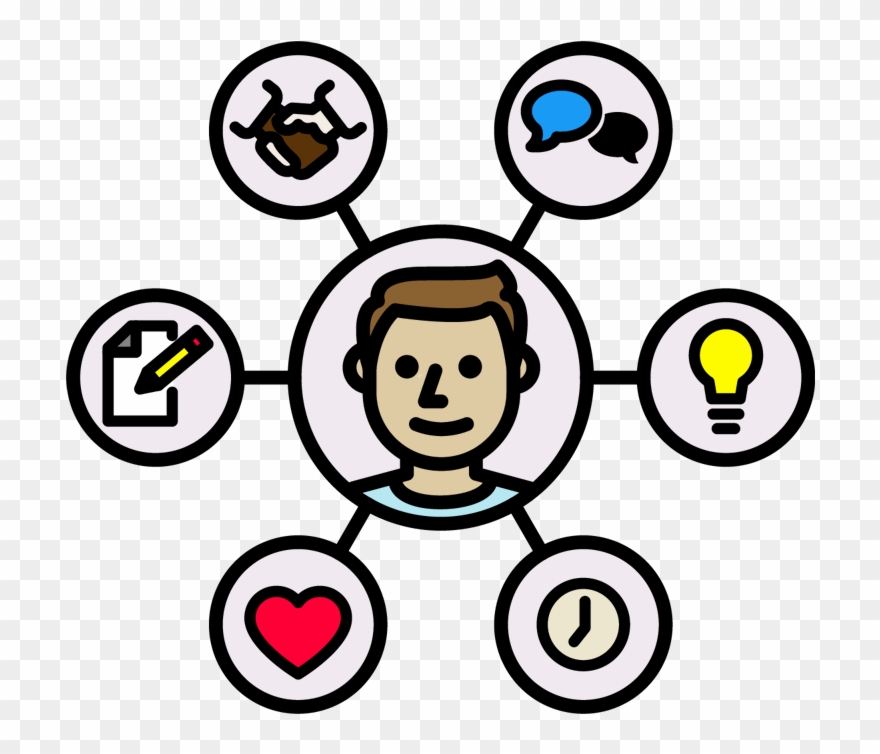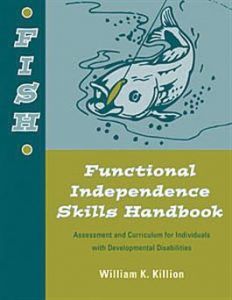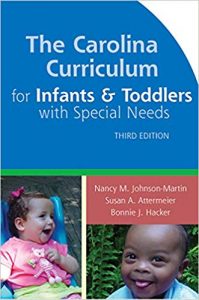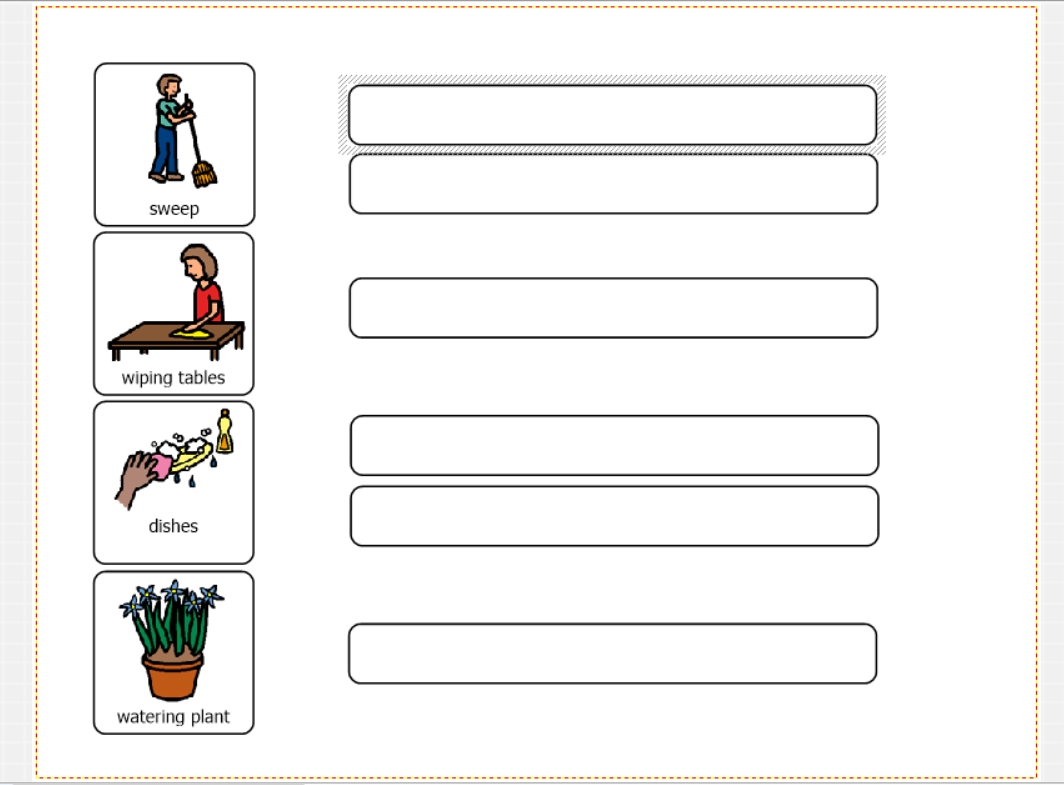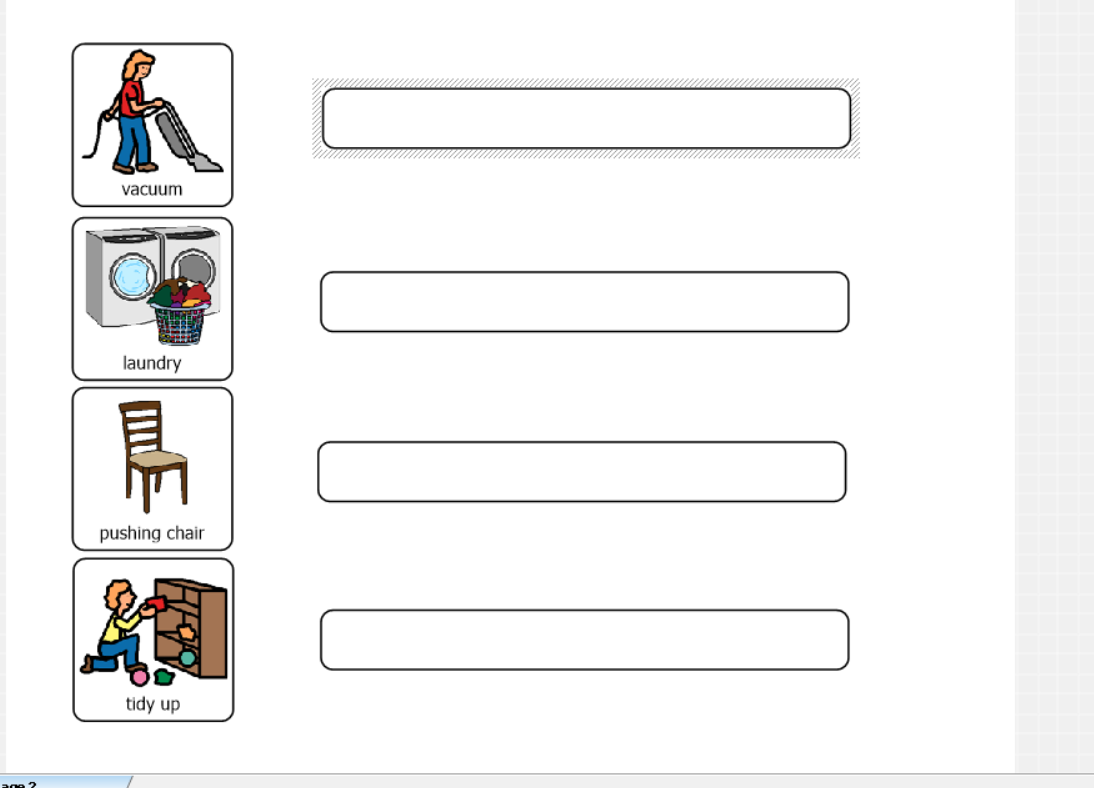When much of the discussion about on-line learning happened in the media this year during the high school contract negotiations, I often thought My students should never have to participate in any course online. My students all have developmental disabilities and are working towards goals on an alternative IEP. Most have some form of communication impairment and are not able to read well enough to follow instructions online. Online learning seemed like something that would never work for my students! Little did I know when 2020 hit, we would have no choice but to figure out online learning the best we could. It has been very tricky, with some successes and some challenges. Here is what has worked:
- Sending a PDF file instead of logging on a pre-existing platform. My students are unable to sign onto a device or navigate difficult platforms. My team sends home a PDF file every Monday with activities, songs and pictures for that week. The PDF has pictures that link to the activity for the student. It is simple, straight forward and allows families to work at their own pace. Since it is a PDF, families have had no trouble opening the file on phones, tablets, iPads, Chromebook or laptops.
2) Having regular parent contact. I contacted all my parents by phone the first week we started the online learning and I end every e-mail, assignment and weekly newsletter with how they can contact me. Spending a lot of time answering parent e-mails and reaching out via phone has alleviated a lot of stress and anxiety.
3) Sending students mail. Who out there doesn’t love to get mail? For my families that have decided not to access the online component of the learning, a letter in the mail continues to tell them that we are thinking of them and offers them another reminder how they can reach out. Did you know that Canada post will deliver pre-stamped envelops to your house? It took about a week to receive our envelops and we were so happy that no one had to leave their house to buy them!
4) Video conferencing with the class and with individual students. My local has worked closely with the board to make some specific platforms available for meeting with students online. When I am meeting with a student and their family, I take another staff member with me on all calls. Usually, it is one of the TAs from my class that my student knows very well. For my students who are incredibly socially motivated and have difficulty reading or communicating, seeing each other has been very important for their emotional well being. I keep it short and control the conversation. Only about half of my families wanted to do this option but the students that have participated, have loved it!!
5) Sharing pictures from class. At the end of every weekly file is a section called connecting. I have included pictures from school and also some parents have submitted some pictures from things that they are doing at home! Many parents have told me that the pictures have been very helpful for their child and they have enjoyed looking at them.

